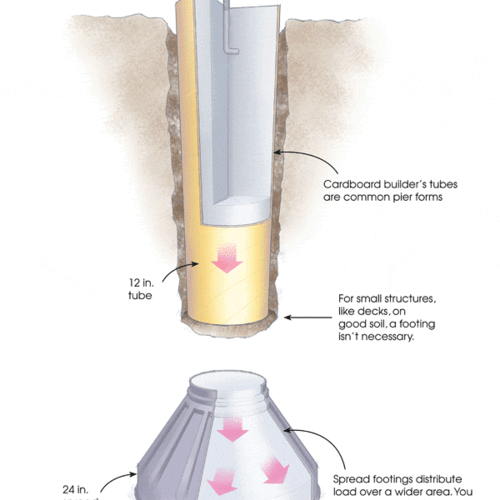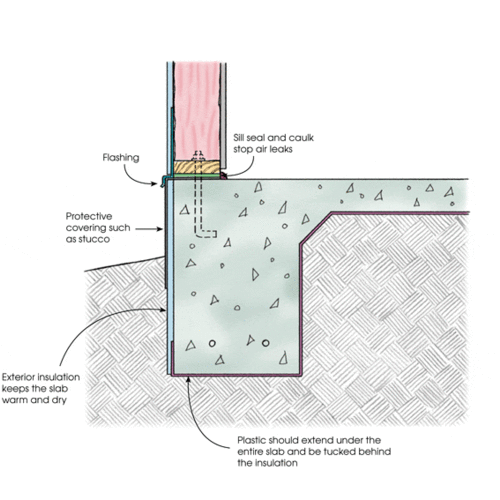ABOUT BRICK
Good water-management details ensure durability
Facing a wood-framed building with brick is a good way to get the look of traditional masonry at a lower cost than traditional construction methods. Brick is fire- and insect-resistant, needs very little maintenance, and is one of the most durable wall claddings available — as long as flashing and moisture details are well thought out and executed.
Brick veneer is an attractive option from an energy standpoint because its lighter weight translates into lower transportation costs and simpler foundations. It is easier and faster to install than full-thickness brick. If the installation is carefully detailed to handle water intrusion and inward solar vapor drive, thinner brick should prove durable with a minimum of maintenance.
Because brick is so durable, salvaged brick often can be reused. But check it carefully and make sure it’s sound. Not all salvaged bricks should be used outside where freezing temperatures can be expected.

This article is only available to GBA Prime Members
Sign up for a free trial and get instant access to this article as well as GBA’s complete library of premium articles and construction details.
Start Free TrialAlready a member? Log in










6 Comments
Brick Ties
The corrugated brick ties shown in your detail are generally useless (even they are considered "standard" by masons). They provide little resistance against lateral forces, and often rust out quickly.
Brick ties
Carl,
The type of brick tie shown in our detail is not spelled out. Those concerned about rusting — and I agree with you, it's a matter of concern — should specify stainless-steel brick ties. They're readily available, although not particularly cheap.
In a cold climate you want the vapor retarder on the warm side of the wall. Is there a good detail for brick veneer against an insulated framed wall that doesn't result in a double vapor barrier but also limits inward vapor drive?
Meri Lewis,
A wall with exterior rigid foam doesn't need an interior vapor retarder. For more information on this issue, see "Calculating the Minimum Thickness of Rigid Foam Sheathing."
In this case there is no external foam. This is a 2x6 zip wall with blown in insulation. The brick wainscotting detail is against the zip WRB. is there a recommendation for the perm rating of the WRB that might suggest zip is not the right solution here?
Meri,
You should read this article: "When Sunshine Drives Moisture Into Walls."
Certainly it's best with brick veneer to include a continuous layer of exterior rigid foam between the WRB and the wall sheathing. But if you don't want to do that, make absolutely sure that your ventilated air space if free of mortar droppings, and that you have weep holes located above grade and ventilation spaces at the top of your brick veneer wall, and you should be OK.
For more information, see "Flashing Brick Veneer."
Log in or become a member to post a comment.
Sign up Log in